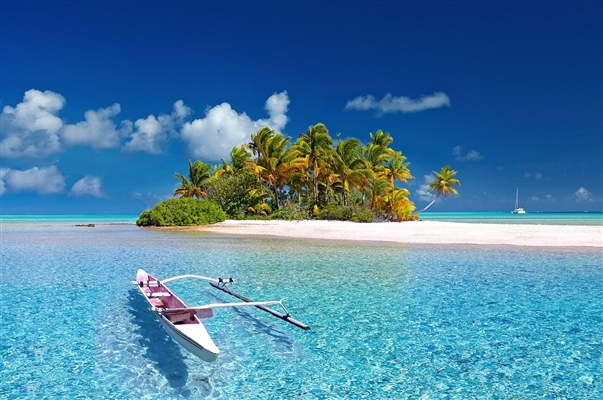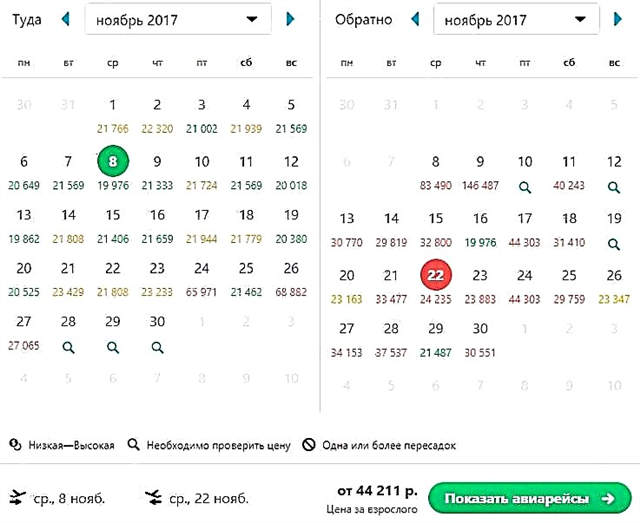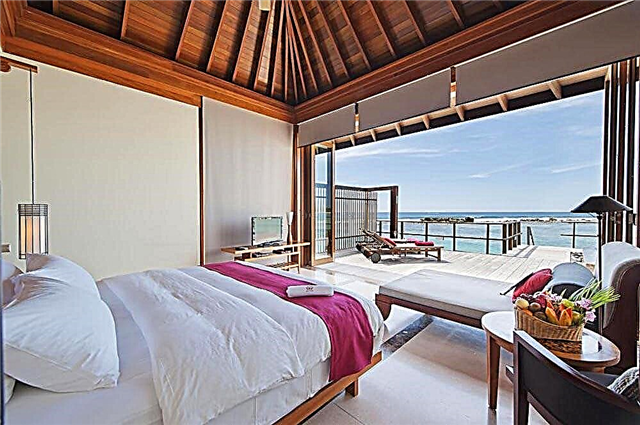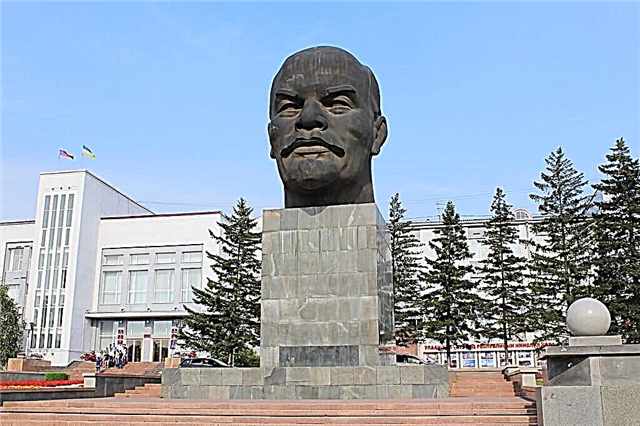Ulan-Ude is the capital of Buryatia. The city is located in Eastern Siberia, 75 km to the South-East of it is Lake Baikal. Despite the relatively young age of the city - 352 years, its history is rich in events. Previously, the city was called Verkhneudinsky, its construction was started in 1666.
The place for the construction of the city was not chosen by chance, it is located on a high hill at the intersection of trade routes with China, Mongolia and the cities of Eastern Siberia. Ulan-Ude is a city whose appearance clearly demonstrates the mixing of cultures of different peoples. Orthodox churches are adjacent to Buddhist datsans. The city is interesting for its many sights and historical monuments, parks and squares.
Historical and modern monuments of Ulan-Ude
List of the most famous monuments and sculptures in the city.
"Mother of Buryatia"
A sculpture of a woman in a national costume with a traditional Buryat khadak in her hands - a symbol of kindness and hospitality. People call it "Hospitable Buryatia". Sculptor Erdene Tsydenov. The total height, together with the pedestal, reaches 16 meters. It was installed in 2002 in the city center, but in 2008 it was moved to the Selenginsky bridge. Now she is on the way from the airport to the city center and meets the residents and guests of Ulan-Ude.

Monument to V.I.Lenin
Erected in 1971, in the year of the centenary of V. Lenin. The authors are sculptors - Georgy and Yuri Neroda. The monument is located on the main square of the city - the Soviet Square. This monument is of particular interest to the guests of the capital. It is a pedestal on which stands a statue of the head of the leader, more than 7 meters high, together with a pedestal of 14 meters. The dimensions of the head statue of the leader are impressive and not surpassed in any city in the world.

"Peers who went into battle"
Monument to soldiers - fellow countrymen, residents of Buryatia, who died in the wars of our time. Opened in 1998. The author is B. B. Badmatsyrenov. The number of soldiers killed in hot spots in Chechnya, Afghanistan and others reaches more than 200 residents. The appearance of the monument is a half-opened flower, a black lotus, which symbolizes the early end of the barely begun life of the dead soldiers.

"Youth of Buryatia"
It is a sculpture of a horse and rider, a handsome youth. The young man holds a bow in one hand, and a falcon spreading its wings in the other. The sculptor is A. Mironov. The monument is made of gray granite, its height is 5 meters. The monument was opened in 2011, in the year of the celebration of the 350th anniversary of the entry of Buryatia into the Russian Empire. The sculpture embodies courage, strength, the breath of youth, the thirst for activity and the unwillingness to stand in one place.

Monument to A.P. Chekhov
The great writer visited Verkhneudinsk, now Ulan-Ude, in 1890, on his way to Sakhalin. The house in the city center where he stayed has not survived. A. Chekhov called Verkhneudinsk “a nice little town”. The monument to Chekhov was created in record time, it took one month to work. It is made of bronze. Opened in 2013. Written by Zandan Dugarov.

Monument to A.S. Pushkin
Opened in 1957. It is a landscape gardening sculpture, a statue of a poet standing at full height, thoughtfully crossing his arms over his chest. Located in the Pushkin park. It is the center of Pushkin readings and various cultural events. The author of the sculpture is Apollo Manuilov. Since the end of the 50s, a typical sculpture of the great poet created by him has adorned many parks and squares of the USSR

"Golden eagle"
A sculptural composition, the opening of which took place in November 2011. The creator was a famous sculptor, author of many monuments of Buryatia - A. Today, the golden eagle is a rare bird, listed in the Red Book. The sculpture of the golden eagle, spreading its wings, has a height of 6 meters, together with the stele - 18 meters. The wingspan of the eagle is 13 meters. The monument is made of bronze and weighs 6 tons. This sculpture embodies power, courage and longevity.

Monument to Geser
Located in the city center, on Victory Avenue. The monument was erected in honor of the epic hero Geser. According to legend, he was a warrior and sorcerer, a shaman who protected the people from enemies. The opening of the sculpture created by A. Mironov took place in 2006. The sculptural composition of the horseman Geser, holding a spear in his hand, personifies the power, strength and courage inherent in the epic hero.

Victory Memorial
It is located in a picturesque park on Pobedy Avenue, in the center of Ulan-Ude. A memorial with an eternal flame is dedicated to the memory of the residents of Buryatia who died in the Great Patriotic War. The opening of the monument took place in 1968. The world famous T-34 tank is located on a concrete pedestal. To the right and to the left of it are bas-reliefs - images of soldiers and home front workers.

"Mergen - archery"
It is a sculpture of a handsome and strong young man with a bow in his hands, located on a high pedestal. This is the author's sculpture created by A.M. Mironov. It is located in a small park at the Sayany bus stop. The very name Mergen means in translation from the Buryat "well-aimed shooter".

"Three elements"
The monument was opened in September 2009, on the day Buryatia celebrated its 85th anniversary. It is located at the intersection of Tereshkova Street and Boevoy Street. Author - A. Represents three equestrian figures rushing in different directions. The horses reared up, demonstrating their disobedience. Three horses are symbols of the three elements - earth, fire and water.

Monument to A. Tsydenzhapov
Installed in 2016. It is located in the park, next to the monument to the Peers Who Gone to Battle. The monument immortalized the memory of the sailor, hero of Russia Adlar Tsydenzhapov, a native of Buryatia, who was only 19 years old. In 2010, at the cost of his life, he put out a fire in the engine room of the destroyer Bystry and saved the crew from possible death.

"Rod of the god of trade Mercury and cornucopia"
The opening took place in 2004, located on Lenin Street. The sculpture depicts the coat of arms of the city. Two snakes, made of bronze, entwine a marble rod, which looks like a column. At the bottom of the column is a bronze cornucopia crowned with a ball. Residents and guests of the city throw coins into it to visit this place again.

"Beauty Angara"
A very beautiful monument located next to the Theater of Opera and Ballet. G. Ts. Tsydynzhapova. Installed in 2002. The creators are A. Mironov and D. Ulanov. The sculpture is dedicated to the national Buryat ballet "The Beauty of Angara". For a long time, the main parts in it were performed by outstanding masters of ballet art - the spouses Larisa Sakhyanova and Peter Abasheev. It is their images that are immortalized in this monument in the images of two great rivers - the Angara and the Yenisei.

"Verkhneudinsk merchant Yevsey Lukich"
Opened in 2014. Located on the street. It is a sculpture of a merchant, with one hand he famously wraps his mustache, in the other he holds a chest with savings. The monument was erected with the financial assistance of the Buryat branch of Sberbank. The installation of the sculpture took place according to the results of the competition, where the best sketch was selected. The author is the sculptor Y. Erdineev.

"Student Spring"
Installed in the park in 2012, the year of the 50th anniversary of the university. This beautiful and graceful sculpture of a young man and a girl - a student and a student, holding hands, adorns the square next to the East Siberian University of Technology. The author of the composition is the famous sculptor A. Mironov.

Monument to the student
Opened in 2012. Installed on the square in front of the Buryat Agricultural Academy. The creator of the sculpture of a young student sitting on a bench - A. The young man's gaze is thoughtfully directed into the distance, next to him is a book. The sculpture is made of bronze. There is a bronze dog at the bench.

"To the fighters who fell for communism in 1918-1920"
Located on pl. Soviets, built in 1926-28 instead of the 1923 monument to the Fighters for Freedom.It is a majestic red granite stele in the form of a quadrangular pillar, on top of which there are images of a sickle, a hammer and a star. The creator of the monument is the architect A. Krotov.

Memorial cross at the site of the city
The name of the monument speaks for itself. The cross was erected in honor of a significant event at the site of the city's founding by Russian Cossacks. The monument was unveiled in 1991. The cross is located on a granite pedestal and itself is also made of granite. It is located on the high right bank of the Uda River at the confluence of the two main rivers of the city - Uda and Selenga.

"To those who died of wounds in hospitals in Ulan-Ude during the Second World War"
The monument is located on Babushkina Street at the mass grave of soldiers who died from severe wounds in hospitals during the 1941-45 war. Opened in 1975. On the stone wall of the memorial, the dead soldiers and Heroes of the Soviet Union, buried in a mass grave, are listed by name. The creator of the memorial was the architect D. Zh. Idymov. Four peonies, made of stone, symbolize the four years of war.

"Two seagulls - terns"
The sculpture is located in the center of Ulan-Ude, on the street. Lenin, among the people this street was named Buryat Arbat. The author of the sculptural composition - A. It represents the bronze figures of two seagulls, located on a pedestal. Paired figures of birds are a symbol of love, family. Also, this sculpture is interpreted as an allegory depicting the two main rivers on which the city stands - Udu and Selenga.

Steam locomotive L-2182
This is a freight locomotive of the "L" series, the so-called "Lebedyanka". Designer - L. Lebedyansky. Such locomotives were distinguished by their high power and durability. The steam locomotive was built in 1953 at the Kolomensky Zavod. In 1962, he was written off to the reserve and stood in the parking lot, like many steam locomotives of the same model. In 1995, it was reconstructed to carry international tourist trains along the Trans-Siberian Railway. In 2009, it was erected as a monument on Revolution Street in 1905 in the park near the building of the All-Russian Railways.

"Chess Kings"
A sculpture of two kings playing a chess game appeared on the street. Komsomolskaya near the city's chess club in 2010. Made of bronze. The official name is "Battle of the Kings". Not far from the "Chess Kings" there is another composition, much smaller in size - the cat and the mouse are also playing chess.

Monument to a pensioner
This is the author's sculpture by A. Mironov. An elderly bronze man in a hat sits on a bench. Installed in 2007 in the park called "Gostiny Ryad". Previously, this square was called "Chess". The name was not accidental, since pensioners, who sat on benches, gathered and played chess and checkers there.

Triumphal Arch "Tsar's Gate"
Located on the street. The arch was erected in honor of the significant event of 1891, the visit to Verkhneudinsk by Tsarevich Nikolai Alexandrovich during his trip to Eastern Siberia. In 1936, during the Soviet era, the gate was demolished, and in 2006 the monument was restored in the same place. The arch is a structure on a stone pedestal with a coat of arms in the center.












